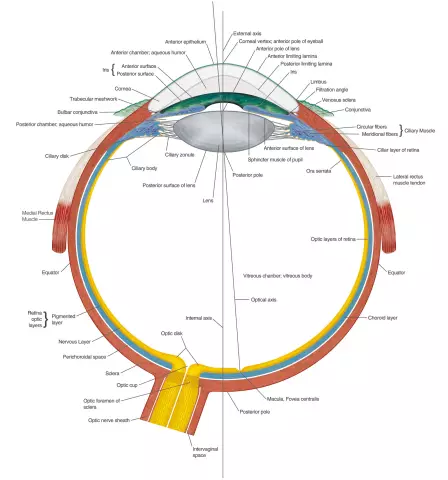- Author Curtis Blomfield [email protected].
- Public 2023-12-16 20:44.
- Last modified 2025-01-23 17:01.
In many respects, this organ is the best: the largest, the heaviest and the most multifunctional. Where is it located and what is its name?
We are talking about the skin, the heaviest in the body, because it weighs up to 3kg. This is also

and the largest human organ. If it is leveled, for example, it will cover up to 2.3 m² of area. Hair and nails, by the way, also belong to our outer cover, being its appendages.
Medically, the skin can be defined as an organ because it is made up of different types of tissues that are in constant interaction.
So, for example, the cover of the human body, like all vertebrates, not only protects it from external influences, but also takes part in water and s alt metabolism, and also performs the functions of a sense organ and excretory. The skin is involved in respiration, in thermoregulation and even acts as a reservoir for fluids and nutrients.
The largest human organ has three layers: epidermis (upper layer), dermis (middle) and subcutaneous fat (lower layer or hypodermis).
Let's take a closer look at the epidermis

The surface of the skin reaches 5 mm thickness on the soles of the feet, but otherwise, on all exposed parts of our body, it is the thinnest layer of 0.1 mm. It is the epidermis that protects the body from fungus and various bacteria, maintains the elasticity of the skin.
The topmost layer of the epidermis, glued together with sebum, is dead and keratinized. And the bottom is the basement membrane, bordering the dermis. It contains continuously dividing germ cells, which, having come off, begin their journey upward. In the process of moving out of them, as a result of chemical reactions, the cell nucleus and organelles are displaced, and the cells, which now mainly include keratin, die. This whole cycle lasts up to 30 days.
The bottom layer of the skin has a high content of fat cells, acting as a store of our energy, and it also acts as a thermal insulation. Hair roots descend into this layer and here are the largest of the blood vessels that feed the skin.
Skin is a sense organ
Have you noticed that many of the human emotions perfectly reflect our biggest

organ? If we are ashamed, we are angry, happy or very pleased with something - our skin turns red. It is clear that this is due to increased blood circulation and connection to the work of additional vessels.
But at the moment of fear, we, on the contrary, turn pale, and then it seems to us that even the hair stood on end. And this is the result of the outflow of blood to the heart and muscle tension.
Stress or increased excitability is also brightexpresses the largest human organ. It has been noticed that after such conditions we often develop rashes and skin irritations. But in moments of spiritual harmony or happy love, she becomes clearly he althier and younger.
In addition, the largest human organ mirrors the state of the whole organism. It will indicate the existing pathological processes in the work of the gastrointestinal tract, the hematopoietic system, the genital area, etc.
If you take care of the skin, keeping it clean and elastic not only with hygiene procedures, but with a he althy lifestyle, as well as age-appropriate creams and scrubs, you will look young for a long time.
And may your largest human organ never betray its owner's age!






